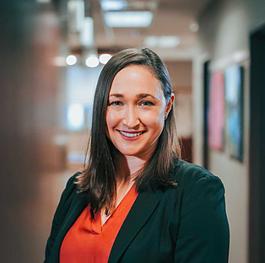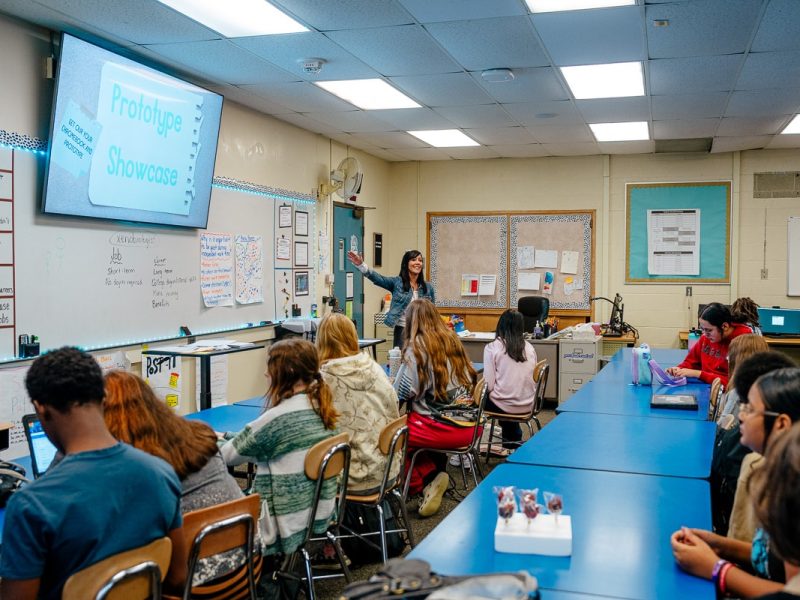Recent Michigan housing legislation incentivizes more housing developments
As part of the Make it in Michigan Strategy, the state of Michigan has new finance tools and opportunities to convert vacant land into housing via the Transformational Brownfield Fund and tax increment funding.

This article is part of the Block by Block series, supported by FHLBank Indianapolis, IFF, and the Community Economic Development Association (CEDAM). The Block by Block series follows small-scale minority-driven development and affordable housing issues in the state of Michigan.
Recent legislation has paved the way for more affordable housing to be created in Michigan. As part of the Make it in Michigan Strategy, Senate Bills 129, 130, 131, and 132 have unlocked tools to develop more affordable housing projects through Brownfield Redevelopment Fund and Tax Increment Financing (TIF).
According to a Michigan Economic Development Corporation (MEDC) press release, the bills allow tax revenues captured through local brownfield development authorities to fund affordable housing costs with the approval of the Michigan State Housing Development Authority (MSHDA), making it easier and more affordable to build affordable housing in Michigan.
The Community Economic Development Association of Michigan (CEDAM) is a nonprofit made up of nonprofit affordable housing developers, Main Street organizations, community developers and foundations, local government, and partnering organizations. One of CEDAM’s efforts is focused on delivering community-building programs for populations with low-to-moderate incomes.

Sandy Pearson, real estate program manager at CEDAM, says historically, brownfield sites and vacant properties were cleaned up and put back into production for more industrial sites within cities. Now, the TIF tool has been expanded to include the production of housing.
“It’s an investment by the community to develop affordable housing,” Pearson says. “For example, like with projects for Habitat for Humanity, it might cost $200,000 to develop a house, but if the family can only afford a mortgage of $150,000, you can fill that $50,000 gap using TIF.”
Many brownfield sites include vacated blighted properties within the city footprint, which can be rehabilitated or demolished to create space for new construction. Pearson says residential neighborhoods are where it really makes a difference in community development. Specifically, many developments focus solely on workforce housing.
The legislation gives developers and communities more tools and incentive to invest in affordable housing projects. MSHDA executive director Amy Hovey says the new TIF tool is a game-changer.
“It’s a flexible tool that can be used to help fund rental, for-sale, single-family, multifamily, new construction, and rehabilitation opportunities for those up to 120% of area median income,” Hovey says in a MEDC press release. “Having an adequate supply of housing in this range is critical for attracting and retaining talent and helping more people reach their full potential in Michigan.”
Michigan Community Capital invests in communities

Marilyn Chrumka is the vice president of development of Michigan Community Capital (MCC). MCC believes in putting people first when investing in communities. Acting as a partner and facilitator in transformational projects across the state, the independent nonprofit 501(c)(3) has invested $1.2 billion in total capital, created or rehabbed 3.9 million commercial square feet, and created more than 1,500 housing units. MCC has received more than $380 million in Federal New Markets Tax Credit allocations as well as funds from MEDC, MSHDA, and local bank partners.
By lending and investing in projects alongside developers, community associations and local nonprofit groups, MCC aims to create wealth-building opportunities for Michigan’s underserved families with low-to-moderate incomes.
Chrumka works with the organization’s mission-driven real estate projects across the state and does everything a developer does, including looking for properties, deciding what to build, hiring architects and contractors, obtaining funding, and getting local approvals.
Over the past five years, MCC has done eight projects, including projects in Cadillac, Ludington, Mount Pleasant, Lansing, and Grand Rapids. Construction on another starts this year in Grayling. Chrumka says every project, whether in a city or a rural community, has a financial gap. Although MCC is artificially holding down the rent rate for affordability, costs of building and development remain the same.
“We pay the same amount to build the building as a market rate developer, but we are not charging as much as we possibly can,” Chrumka says. “We don’t get a discount on our construction because we’re providing a discount to our residents.”
In recent years, that financial gap has only gotten bigger, as construction costs increase steadily in terms of cost per square foot. That, coupled with high interest rates, makes it harder to build these projects. And that’s where TIF and the Transformational Brownfield Fund come into play.
TIF allows the future incremental taxes paid from new investment or development on a property to be captured or redirected to help in repaying or reimbursing costs for that development. Chrumka says TIF is commonly misunderstood.
“When you hear about tax increment financing, some think it’s taking money out of the taxes of the community and giving it to the developer,” Chrumka says. “It’s not taking away from the community at all.”

Grayling a great example
The MCC has recently used the TIF and new eligibility for housing to help push along the development in Grayling. This is the first time the organization is using the tool since the legislation has been passed.
Initially, the Grayling Sawmill Lofts project was slated for 2021, but when estimates returned 30% higher than previously quoted, the project came to a halt. Now, with more funding and tools available, Sawmill Lofts is back on track.
In 2019, the space was identified by the City of Grayling as a priority redevelopment ready site through MEDC. The contaminated site with two single-story buildings was formerly used for a dry cleaners and auto mechanical maintenance. Through an Environment Great Lakes, and Energy (EGLE) grant, the site was studied and cleaned up. The proposal is to build a five-story mixed-use building with 4,000 square feet of commercial use and 40 apartments.
Chrumka is excited to see the project become a reality with construction starting fall 2024, pending all approvals are met. She’s also excited to see this legislation used for other properties that weren’t previously contaminated.
“Just creating housing is the qualification in itself, so it really opens up any site that the community would support housing on,” Chrumka says. “Previously, you had to qualify as blighted, contaminated, functionally obsolete, or historic. It allows for any community to access this tool. It really opens up the tools that all communities can use in the state.”
As the American dream of home ownership becomes more rare with prices going up and property availability going down, Chrumka hopes to further educate generations on the causes of the changing economics and its impacts.
“I think it’s hard for people to understand. A certain generation has a hard time understanding why it’s so expensive, and they didn’t get any handouts when they were coming up,” she says. “The way the economics and the pricing of construction has changed and increased so much — this American dream of getting a good job and being able to buy an affordable house is very scarce.”

State Land Bank Authority perspective
Jim Tischler is the development director at the State Land Bank Authority, which was created in 2003. For the past 20 years, the State Land Bank Authority has had the opportunity to provide land parcels for affordable housing.

Before TIF, the State Land Bank assisted Lakeshore Habitat for Humanity in a housing development, Park Vista Place in Holland. In more recent years, the State Land Bank Authority has been working with nonprofit and for-profit developers in producing housing and is a pioneer in the housing TIF legislation.
Tischler says this new legislation provides the Land Bank community with further leverage to use or reuse land bank properties to produce attainable, affordable housing and mixed-income housing to benefit renters, owners, and communities.
“It actually provides that incentive to encourage development to happen on a property or multiple properties,” he says. “It’s also a facilitator of long-term public revenue for local units of government and school districts if they use it correctly.”
Looking forward, Tischler hopes the state, its residents, and municipalities can fully understand the tools of project-based TIF so they can be better utilized in communities.
Tischler concludes, “This new tool is a tremendous opportunity for communities, households, and the state at large to benefit.”
Sarah Spohn is a Lansing native, but every day finds a new, interesting person, place, or thing in towns all over Michigan, leaving her truly smitten with the mitten. She received her degrees in journalism and professional communications and provides coverage for various publications locally, regionally, and nationally — writing stories on small businesses, arts and culture, dining, community, and anything Michigan-made. You can find her in a record shop, a local concert, or eating one too many desserts at a bakery. If by chance, she’s not at any of those places, you can contact her at sarahspohn.news@gmail.com.
Masthead photo by Priya Karkare via Pexels/com.
Other photos courtesy subjects.
Supported by FHLBank Indianapolis, IFF, and the Community Economic Development Association (CEDAM), the Block by Block series follows small-scale minority-driven development and affordable housing issues in the state of Michigan.







